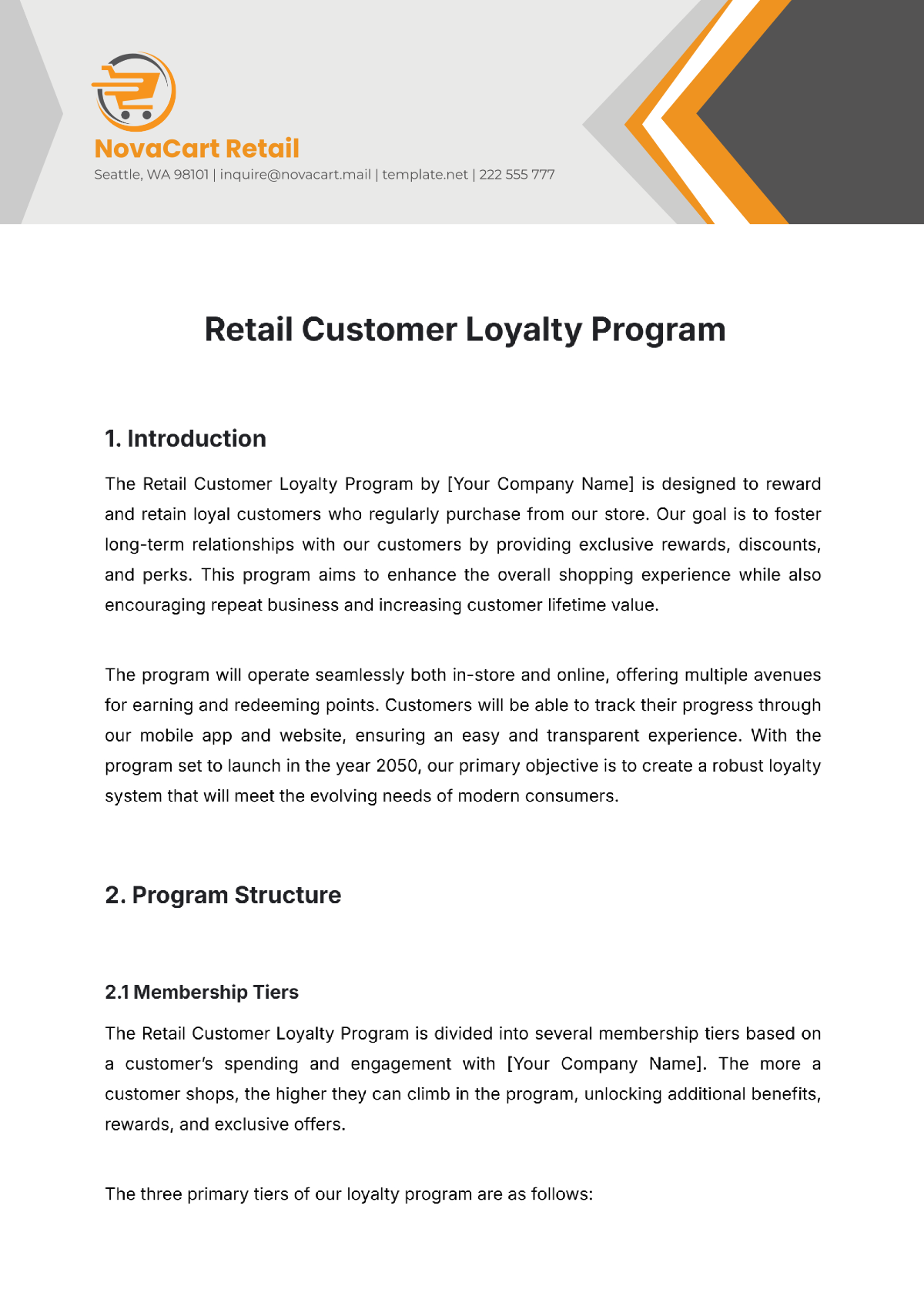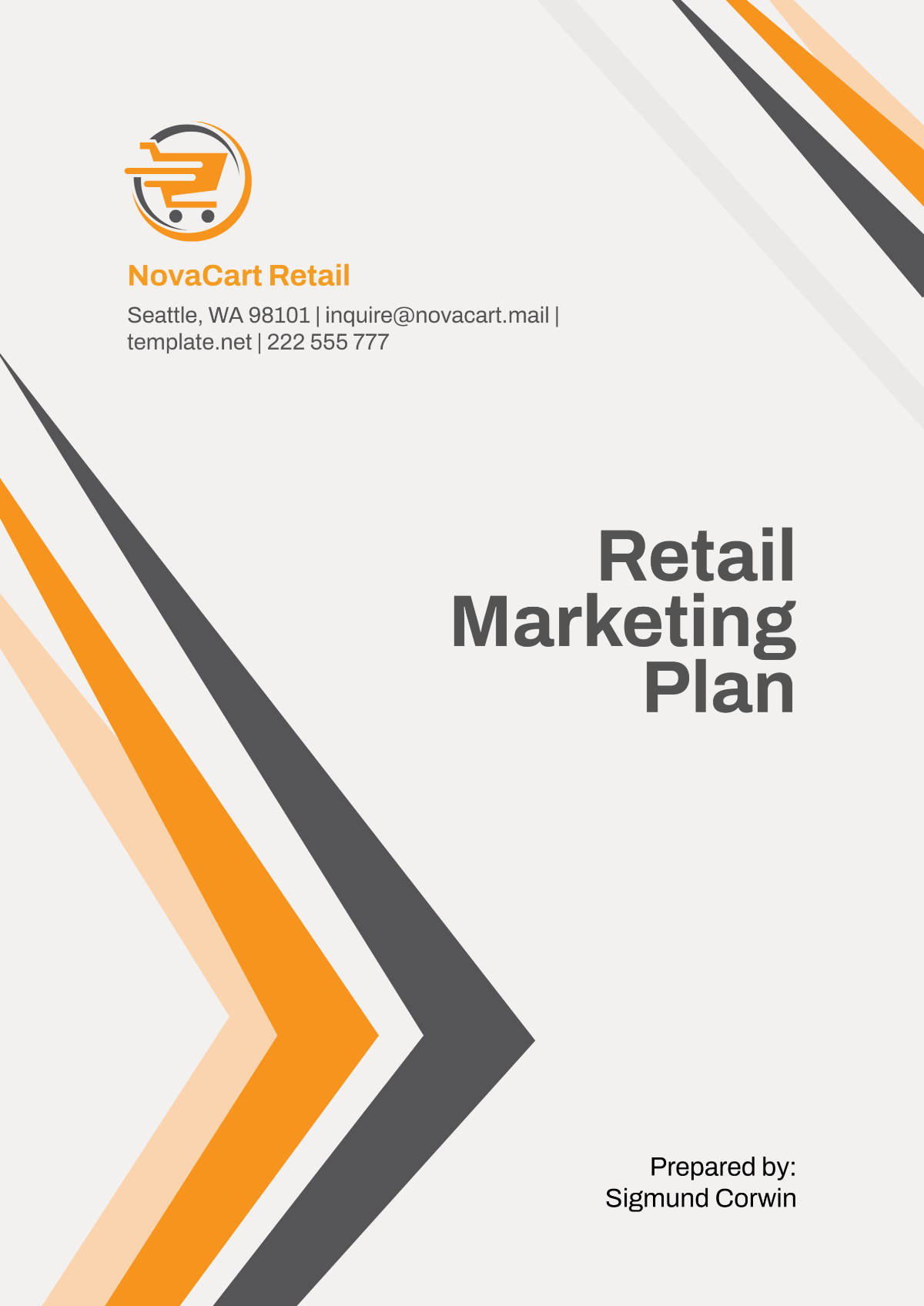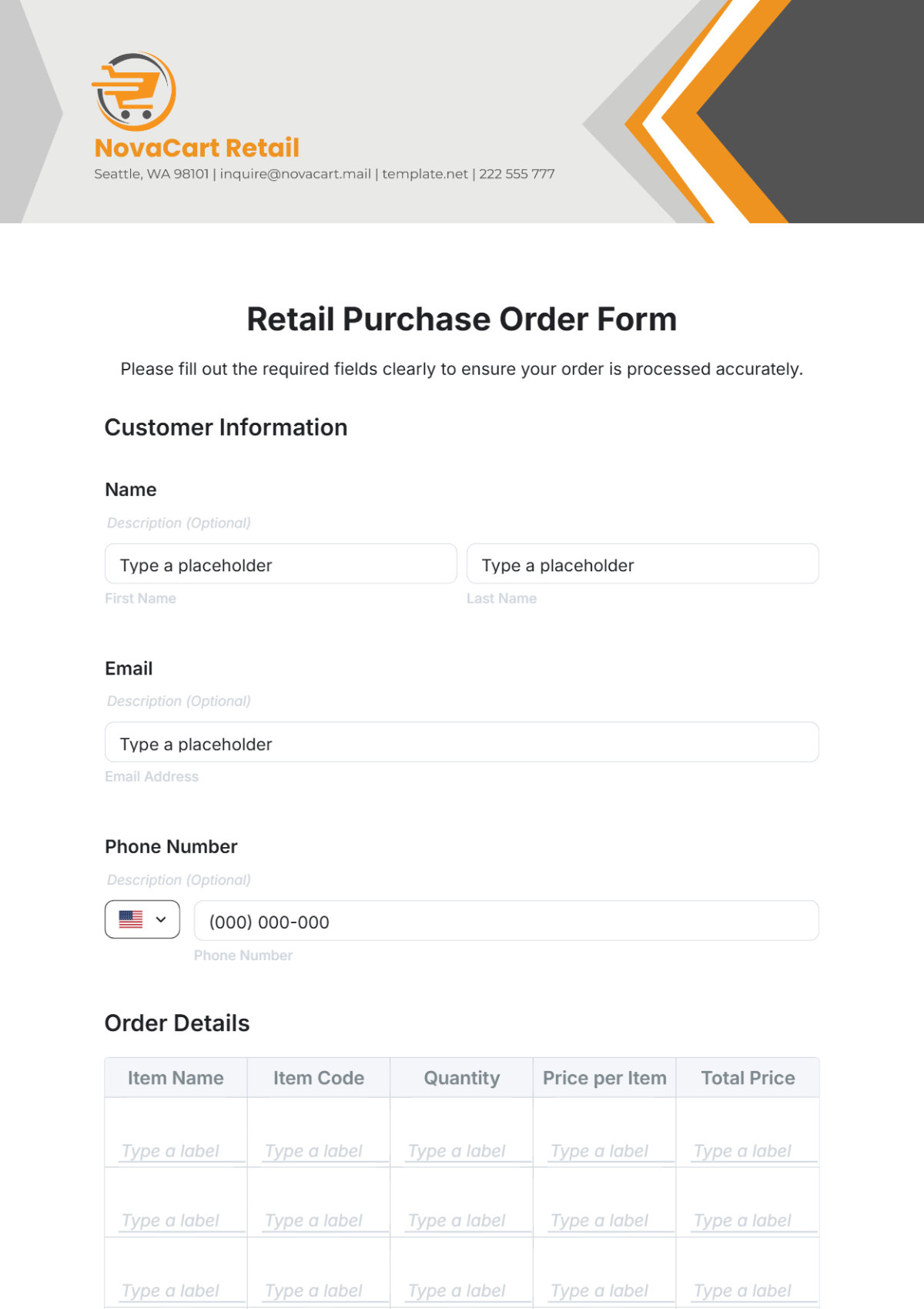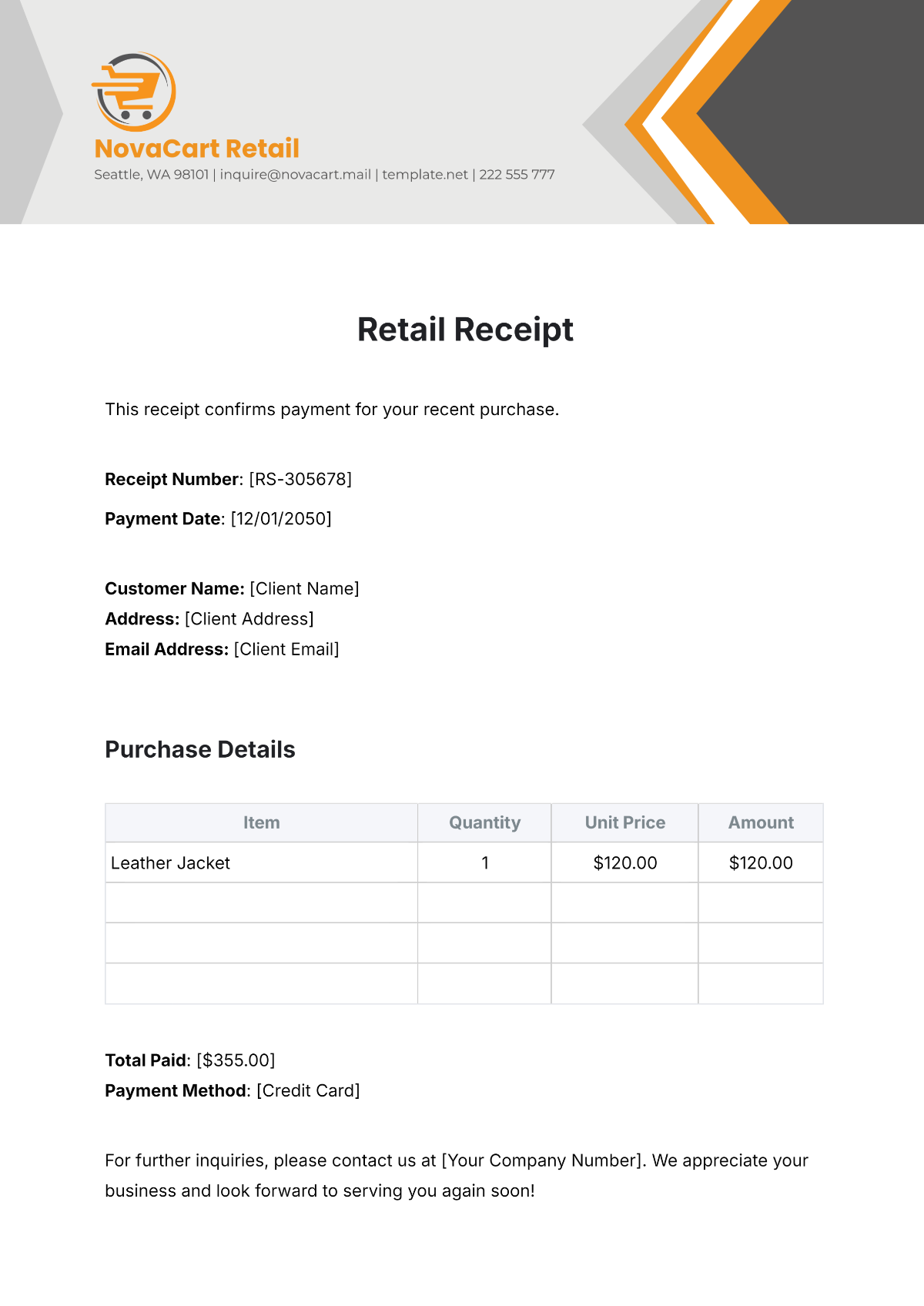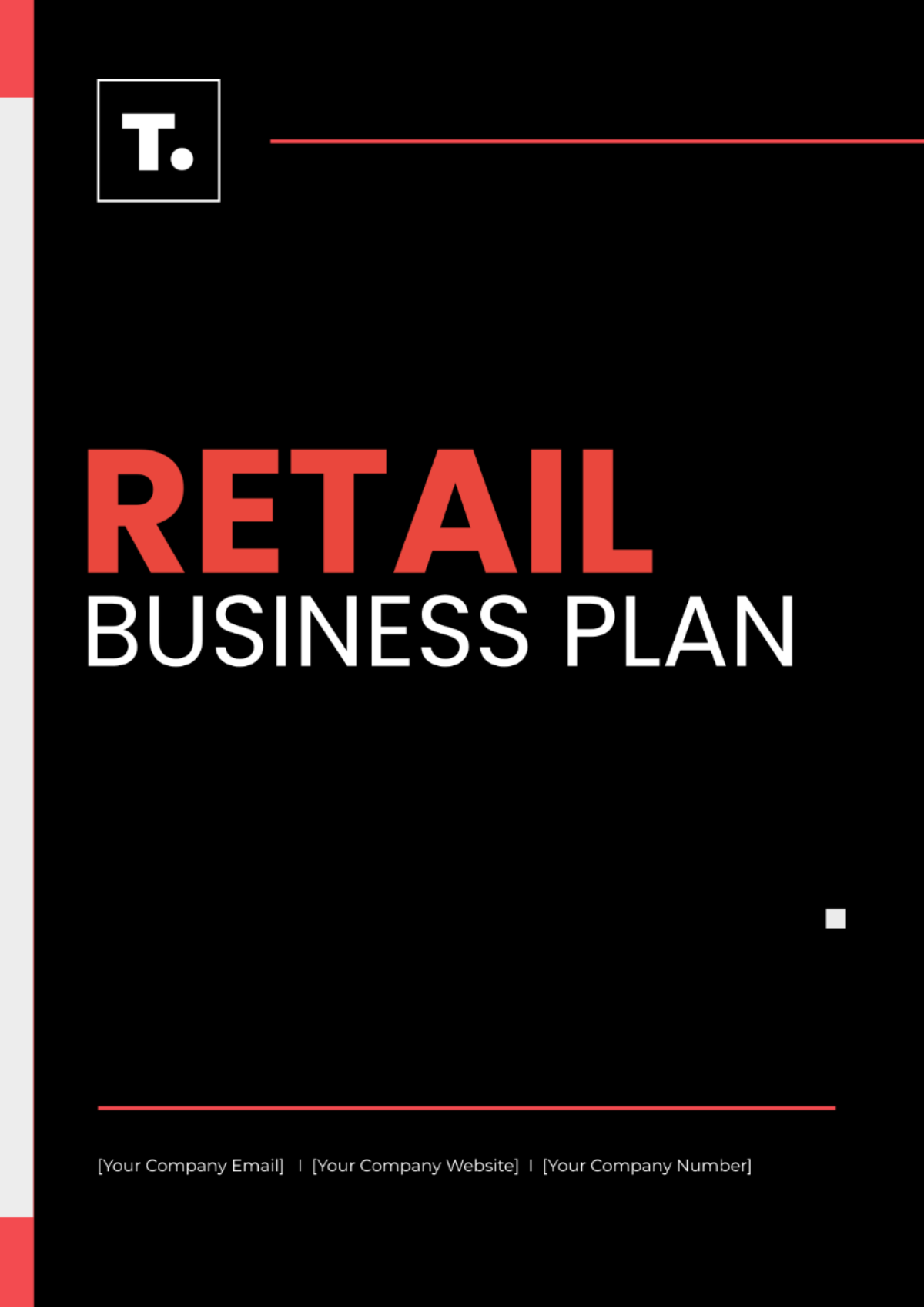Department Store Strategy
1. Introduction
As the retail landscape continues to evolve at an unprecedented pace, department stores must adopt a forward-looking strategy to remain relevant in the competitive market of 2050 and beyond. The combination of technological advancements, changing consumer preferences, and economic shifts requires a comprehensive approach to retail management. This strategy outlines key elements for success, focusing on customer engagement, technological integration, supply chain efficiency, sustainability, and financial growth. By aligning our goals with the future market dynamics, [Your Company Name] aims to leverage these trends to cater to evolving consumer demands while ensuring long-term profitability.
To thrive in this dynamic environment, it is crucial for department stores to not only respond to current challenges but also anticipate future opportunities. Our strategic framework will not only focus on enhancing the customer experience but will also emphasize operational excellence, sustainability, and financial stability. By committing to these core values, [Your Company Name] is poised to lead the industry into the next era of retail.
2. Vision and Mission
2.1 Vision
To be the leading innovator in department store retail, offering customers a seamless shopping experience that integrates cutting-edge technology, sustainability, and personalized service by 2050. We envision a retail environment where customers feel valued, engaged, and empowered to make informed purchasing decisions.
2.2 Mission
To deliver high-quality, accessible, and sustainable products while enhancing the in-store and online shopping experience through innovation, customer-focused solutions, and operational excellence. Our mission includes fostering a culture of customer service that prioritizes the needs and preferences of every shopper, ensuring they leave our stores with a sense of satisfaction and connection to the brand.
3. Market Analysis
3.1 Current Market Trends
The department store industry is projected to grow steadily between 2050 and 2060, with a compound annual growth rate (CAGR) of [3.5%]. This growth is fueled by the increasing preference for personalized shopping experiences and the integration of technology in retail. Consumers are increasingly seeking not only quality products but also unique experiences that cater to their individual tastes and values. In particular, the shift toward digital platforms and online shopping has accelerated post-2040, with e-commerce sales accounting for [55%] of total retail sales in the sector. This trend highlights the importance of omnichannel strategies that connect both online and offline shopping experiences.
Moreover, the rise of the conscious consumer is reshaping purchasing decisions. Today's shoppers are more informed than ever, often using smartphones and social media to research products before making purchases. As a result, transparency in sourcing and production is becoming paramount, pushing retailers to adopt sustainable practices that resonate with their customer base.
3.2 Competitive Landscape
The industry is dominated by a few key players, including both traditional department stores and tech-based retail platforms. Competitors are focusing on omnichannel retail strategies, AI-driven personalization, and experiential shopping to drive growth. In this competitive environment, [Your Company Name] must differentiate itself by emphasizing unique product offerings, superior customer service, and innovative shopping experiences. The integration of AI-driven supply chain systems and customer service bots is rapidly transforming the industry, making it crucial for [Your Company Name] to adopt similar technologies.
Furthermore, partnerships with emerging tech firms could enhance our technological capabilities, allowing us to implement advanced data analytics and machine learning solutions that predict consumer behavior with high accuracy. By understanding market trends and customer preferences, we can proactively adjust our strategies and offerings, ensuring that we remain competitive and relevant.
3.3 Consumer Behavior
The consumer of 2050 is highly tech-savvy, environmentally conscious, and expects a personalized, frictionless shopping experience. They prioritize brands that align with their values, particularly regarding sustainability and ethical sourcing. Research shows that approximately [70%] of consumers are willing to pay a premium for products that are sustainably sourced or produced, indicating a significant market opportunity for retailers committed to eco-friendly practices.
Moreover, consumers are increasingly using digital channels for product research and purchases, necessitating that department stores enhance their online presence. They expect same-day delivery and virtual try-on services when shopping online, while still enjoying the physical touchpoints of brick-and-mortar stores. This expectation places significant pressure on retailers to develop robust logistics and customer service capabilities to fulfill these demands effectively.
4. Strategic Objectives
To ensure sustainable growth and market leadership by 2050, [Your Company Name] has identified the following key strategic objectives:
4.1 Enhance Customer Experience
Personalization: Utilize artificial intelligence (AI) and machine learning to provide personalized shopping experiences based on customer data, preferences, and shopping habits. By analyzing customer interactions across various platforms, we will be able to tailor marketing messages and product recommendations, thereby increasing customer satisfaction and loyalty.
Omnichannel Integration: Seamlessly integrate online and in-store shopping to offer customers a unified experience across all platforms, whether mobile, desktop, or physical store. This integration will allow customers to enjoy features such as click-and-collect, where they can order online and pick up their purchases in-store, enhancing convenience.
Experiential Retail: Create immersive in-store experiences with virtual reality (VR) and augmented reality (AR) features, allowing customers to visualize products in their homes or try them virtually. Such experiences not only make shopping more enjoyable but also encourage higher spending and repeat visits.
4.2 Optimize Supply Chain
AI-Driven Automation: Implement AI to predict demand and manage inventory more efficiently, reducing excess stock and improving supply chain flow. By analyzing historical sales data and market trends, AI can help us anticipate shifts in consumer preferences, enabling more accurate inventory management and reducing waste.
Sustainability: Adopt eco-friendly practices in sourcing, production, and logistics to reduce carbon emissions and waste by at least [30%] by 2055. Our goal is to not only comply with environmental regulations but to exceed them and lead by example in sustainable retailing.
Robotic Fulfillment Centers: Transition to fully automated fulfillment centers that use robots for picking, packing, and dispatching products to reduce human errors and increase efficiency. These centers will operate on a 24/7 basis, allowing for rapid order fulfillment and enhanced customer service.
4.3 Sustainable Growth
Green Retailing: Commit to using renewable energy sources across all stores and warehouses, with a goal to reduce energy consumption by [40%] by 2060. This commitment reflects our dedication to sustainability and our responsibility to reduce our environmental impact.
Ethical Sourcing: Ensure that all products are sourced from suppliers that adhere to fair trade and ethical labor practices. We will establish a rigorous vetting process to ensure that our suppliers meet these standards, reinforcing our brand's commitment to ethical practices.
Expansion: Target emerging markets in developing countries, where urbanization and rising incomes will fuel demand for high-quality retail experiences. Our expansion strategy will focus on adapting our product offerings to meet the unique cultural and economic contexts of these markets, ensuring that we cater to local preferences.
5. Customer Experience Strategy
5.1 AI-Driven Personalization
By 2050, consumers expect hyper-personalized shopping experiences. [Your Company Name] will use AI algorithms to analyze customer behavior, preferences, and purchase history to provide customized product recommendations and marketing messages. This technology will enable us to create targeted marketing campaigns that resonate with individual customers, enhancing engagement and conversion rates. Additionally, personalized emails and notifications will keep customers informed about products that match their interests, encouraging repeat purchases.
The ability to understand customer preferences in real-time will significantly enhance our sales strategies. By tailoring promotions and discounts based on individual shopping habits, we can increase the likelihood of conversion and foster long-term loyalty among our customer base.
5.2 Omnichannel Integration
The seamless transition between online and offline channels will be vital for future success. Customers will be able to view product availability online, try products virtually, and pick them up at the nearest store within hours. A centralized database will track customer interactions across platforms, allowing them to start a purchase on one device and complete it on another without losing information. This interconnectedness will create a frictionless experience that builds trust and convenience.
Moreover, providing customers with easy access to their purchase history and loyalty rewards across platforms will enhance their overall experience. The more integrated our systems are, the more empowered our customers will feel, leading to increased satisfaction and higher retention rates.
5.3 Experiential Retail
Physical stores will become experiential hubs, offering interactive displays, immersive AR/VR experiences, and community spaces. In-store events, such as workshops or product demonstrations, will be a key part of our strategy to engage customers. VR rooms in stores will allow customers to try on clothes, visualize furniture in their homes, or even walk through virtual versions of their homes for home décor selections. These experiences not only enhance customer engagement but also encourage customers to spend more time in-store, increasing the likelihood of impulse purchases.
Table 1: Examples of In-Store Experiences
Experience Type | Description | Goal |
|---|---|---|
Virtual Try-On Stations | Customers try on outfits or accessories using AR mirrors | Enhance customer engagement and satisfaction |
Interactive Displays | Touchscreens that provide product information, reviews, and stock availability | Provide instant product insights and foster informed purchasing decisions |
3D-Printed Customization | On-demand 3D printing of personalized products like jewelry or home décor | Offer unique, custom items that enhance brand loyalty |
VR Showrooms | Customers can tour entire store collections or visualize products in their own spaces | Encourage large-scale purchases through engaging experiences |
6. Supply Chain Optimization
6.1 AI-Driven Supply Chain Management
By leveraging AI, [Your Company Name] will be able to predict demand with greater accuracy, optimize inventory levels, and reduce stockouts or overstock situations. This will involve implementing advanced algorithms that analyze market trends, customer preferences, and historical sales data to ensure that the right products are available at the right time. Improved forecasting will allow us to align our inventory with consumer demand, minimizing waste and maximizing sales.
6.2 Robotics and Automation
The introduction of robotic systems in our fulfillment centers will streamline the order processing workflow, reduce operational costs, and improve efficiency. Robots will be responsible for tasks such as picking and packing products, allowing human employees to focus on higher-value tasks, such as customer service and strategic planning. This transition will not only enhance productivity but will also create a safer working environment by reducing the physical strain on employees.
Table 2: Projected Cost Savings from Automation
Year | Projected Cost Savings ($ millions) | Percentage Reduction in Labor Costs (%) |
|---|---|---|
2050 | [20] | [10%] |
2055 | [30] | [15%] |
2060 | [50] | [20%] |
6.3 Sustainable Practices
In alignment with our commitment to sustainability, [Your Company Name] will implement eco-friendly practices throughout the supply chain. This includes sourcing materials from suppliers who follow sustainable practices, reducing packaging waste, and optimizing logistics to minimize carbon emissions. Our goal is to achieve a [30%] reduction in our overall carbon footprint by 2060. By prioritizing sustainability in our supply chain, we not only reduce environmental impact but also appeal to the growing number of environmentally conscious consumers.
7. Sustainability Initiatives
7.1 Renewable Energy Adoption
[Your Company Name] is committed to transitioning to renewable energy sources across all stores and facilities by 2055. This initiative will include the installation of solar panels, wind turbines, and other renewable technologies to power our operations. By investing in renewable energy, we aim to achieve energy independence while significantly reducing our greenhouse gas emissions.
Table 3: Projected Energy Savings from Renewable Initiatives
Year | Projected Energy Savings ($ millions) | Percentage Reduction in Energy Costs (%) |
|---|---|---|
2050 | [10] | [20%] |
2055 | [15] | [30%] |
2060 | [25] | [40%] |
7.2 Waste Reduction Programs
We will implement comprehensive waste reduction programs that target recycling, composting, and reducing single-use plastics in all stores. Our goal is to achieve a [50%] reduction in waste sent to landfills by 2060. These initiatives will not only support our sustainability goals but will also resonate with consumers who prioritize eco-friendly practices. Engaging customers in our recycling initiatives through incentives or loyalty rewards will further enhance our brand image and customer loyalty.
7.3 Ethical Sourcing
[Your Company Name] will establish rigorous standards for ethical sourcing, ensuring that all suppliers adhere to fair labor practices and environmental stewardship. We will conduct regular audits and assessments of our supply chain to ensure compliance and foster transparency. By prioritizing ethical sourcing, we aim to build trust with our customers and enhance our brand's reputation in the marketplace.
8. Financial Projections
8.1 Revenue Growth
[Your Company Name] projects consistent revenue growth, aiming to achieve [10%] annual revenue growth from 2050 to 2060. This growth will be driven by the successful implementation of our e-commerce strategies, customer experience enhancements, and the expansion of our physical store footprint. We anticipate that as we adapt to changing consumer preferences and invest in innovation, our revenue will increase significantly.
Projected Revenue Growth
8.2 Cost Management
By focusing on operational efficiency and sustainable practices, [Your Company Name] aims to reduce operational costs by [15%] by 2060. This will include investments in technology to streamline processes and reduce overhead costs. We will also explore partnerships with logistics providers to optimize our shipping and delivery processes, further enhancing our cost management strategies.
8.3 Profit Margin
With the implementation of sustainable practices and operational efficiency improvements, [Your Company Name] aims to increase its profit margins to [10%] by 2055. Higher sales volumes driven by enhanced customer experience and effective supply chain management will contribute to this goal. Additionally, by focusing on high-margin product categories and exclusive offerings, we will enhance our overall profitability.
9. Expansion Strategy
9.1 Geographic Expansion
[Your Company Name] plans to open [100] new stores in emerging markets by 2060, focusing on regions with growing middle-class populations, such as Southeast Asia, Africa, and South America. This expansion strategy will not only enhance our market presence but also diversify our revenue streams. By tailoring our product offerings to local tastes and preferences, we aim to establish a strong foothold in these developing markets.
9.2 E-Commerce Expansion
E-commerce is projected to become an essential component of our growth strategy, with a goal to increase online sales to account for [70%] of total revenue by 2060. To achieve this, we will invest in cutting-edge technologies that enhance the online shopping experience, including AI-driven personalization, virtual fitting rooms, and fast, reliable shipping options. Building a robust online community through social media engagement and influencer partnerships will also enhance our digital presence and drive traffic to our online platforms.
10. Conclusion
By 2050, [Your Company Name] will be recognized as a market leader in the department store industry, known for its commitment to technological innovation, sustainable practices, and exceptional customer experience. With a clear strategic focus on personalization, supply chain optimization, and sustainable growth, we are well-positioned to thrive in the evolving retail landscape. Our investments in AI, automation, and green retailing will not only enhance our competitiveness but also drive value for our customers, employees, and shareholders alike.
In this journey toward becoming a retail leader, we understand that our success will depend on our ability to adapt to changing market dynamics and consumer preferences. By staying true to our vision and mission, and by embracing innovation and sustainability, [Your Company Name] will not only meet the needs of today’s consumers but will also shape the future of retail for generations to come.










